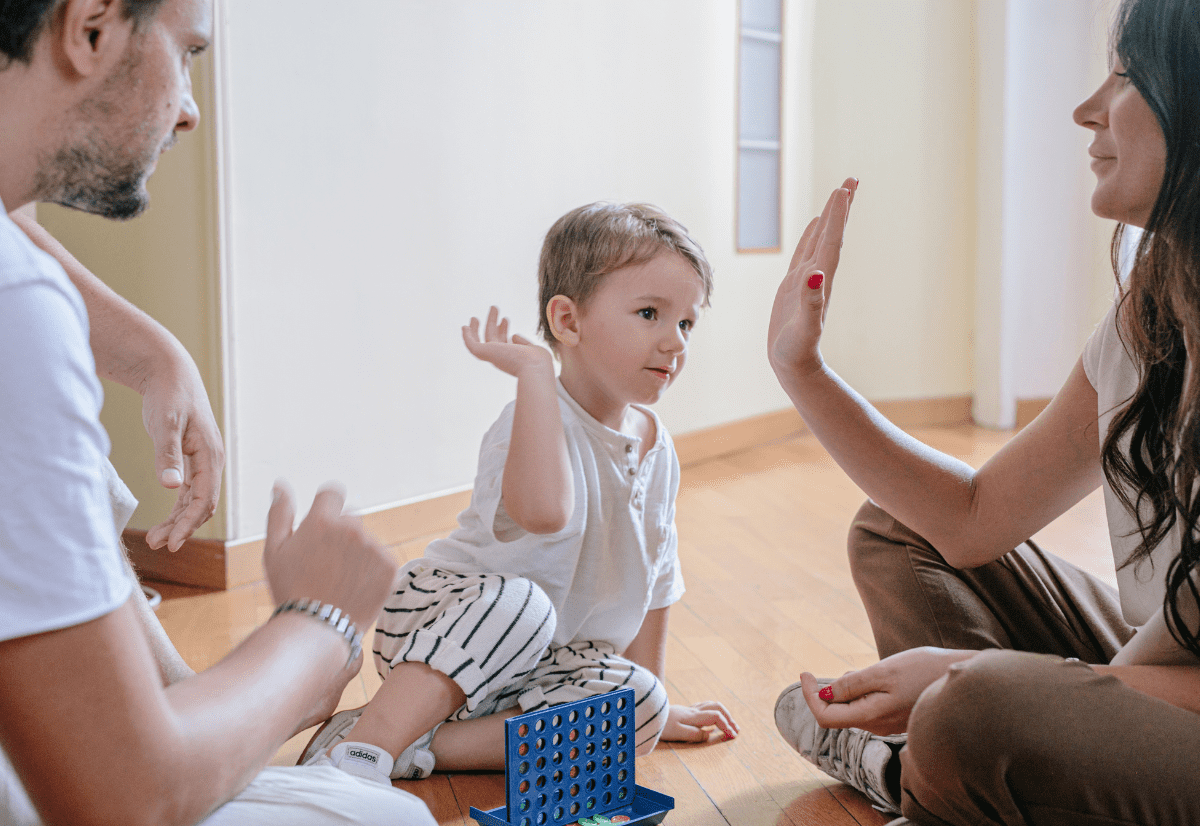As parents or caregivers, our role goes beyond just providing for the physical needs of our children. It is equally important to create a safe haven—a nurturing and supportive environment where they feel loved, secure, and emotionally grounded. Being a safe haven for your child means fostering emotional well-being and resilience, enabling them to navigate life’s challenges with confidence and positivity. In this blog post, we will explore practical strategies and evidence-based approaches to help you become a safe haven for your child, ensuring their healthy emotional development.
Building Trust and Emotional Connection:
Building trust and emotional connection is foundational to being a safe haven for your child. Actively listen to their thoughts and feelings, validate their emotions, and be empathetic in your responses. Let your child know that their feelings are valid and that they can rely on you for support [1] [2].
Consistent and Predictable Routines:
Consistency and predictability provide a sense of stability and safety for children. Establish regular routines for meals, bedtime, and daily activities to create a predictable environment. This helps your child feel secure and know what to expect, reducing anxiety and promoting emotional well-being [3] [4].
Setting Boundaries and Encouraging Independence:
Setting clear and appropriate boundaries helps children understand expectations and feel secure. Encourage their independence within these boundaries, allowing them to explore and learn from their experiences. Offer guidance and support while also fostering their sense of autonomy [5] [6].
Cultivating Emotional Resilience:
Teach your child healthy coping mechanisms to navigate challenges and build emotional resilience. Model positive behavior, encourage problem-solving, and emphasize the importance of self-care. Allow them to experience setbacks and help them develop effective ways to bounce back from adversity [7] [8].
Open Communication and Active Listening:
Creating an open and safe space for your child to express their thoughts and concerns is essential. Practice active listening, show empathy, and offer non-judgmental support. Let your child know that they can come to you with any issue or worry [9] [10].
Providing a Safe Physical Environment:
Ensuring your child’s physical safety is crucial for their overall well-being. Childproof your home, supervise their activities, and provide age-appropriate toys and equipment. A safe and secure environment fosters trust and comfort [11] [12].
Being a safe haven for your child is a profound gift that will shape their emotional growth and overall happiness. By building trust, establishing consistent routines, setting boundaries, promoting independence, cultivating emotional resilience, fostering open communication, and providing a safe physical environment, you create a nurturing and supportive space for your child to thrive. Remember, your role as a safe haven is an ongoing commitment that requires patience, love, and understanding. By prioritizing your child’s emotional well-being, you equip them with the tools they need to navigate life’s challenges with confidence, resilience, and a deep sense of security. As a parent or caregiver, being a safe haven is one of the most important contributions you can make to your child’s life.
References
- Smith, A., Cowie, H., & Blades, M. (2017). Understanding Children’s Drawings. John Wiley & Sons.
- Siegel, D. J., & Bryson, T. P. (2014). No-Drama Discipline: The Whole-Brain Way to Calm the Chaos and Nurture Your Child’s Developing Mind. Bantam.
- Spagnola, M., & Fiese, B. H. (2007). Family routines and rituals: A context for development in the lives of young children. Infants & Young Children, 20(4), 284-299.
- Mindell, J. A., Li, A. M., Sadeh, A., Kwon, R., & Goh, D. Y. (2006). Bedtime routines for young children: A dose-dependent association with sleep outcomes. Sleep, 29(10), 1263-1266.
- Shaffer, D. R., & Kipp, K. (2010). Developmental Psychology: Childhood and Adolescence (8th ed.). Cengage Learning.
- Darling, N., & Steinberg, L. (1993). Parenting style as context: An integrative model. Psychological Bulletin, 113(3), 487-496.
- Masten, A. S., & Cicchetti, D. (2016). Developmental cascades. Development and Psychopathology, 28(4pt2), 955-962.
- Eisenberg, N., Spinrad, T. L., & Morris, A. S. (2010). Empathy-related responding in children. Handbook of Moral Behavior and Development, 2, 517-549.
- Denham, S. A., & Burton, R. (2003). Social and emotional prevention and intervention programming for preschoolers. Springer.
- Gottman, J. M., Katz, L. F., & Hooven, C. (1997). Parental meta-emotion philosophy and the emotional life of families: Theoretical models and preliminary data. Journal of Family Psychology, 11(3), 243-268.
- Kendall-Tackett, K., Williams, L., & Finkelhor, D. (2013). Impact of sexual abuse on children: A review and synthesis of recent empirical studies. Psychological Bulletin, 113(3), 164-180.
- Fergusson, D. M., Lynskey, M. T., & Horwood, L. J. (2013). Childhood sexual abuse and psychiatric disorder in young adulthood: II. Psychiatric outcomes of childhood sexual abuse. Journal of the American Academy of Child & Adolescent Psychiatry, 34(10), 1365-1374.













